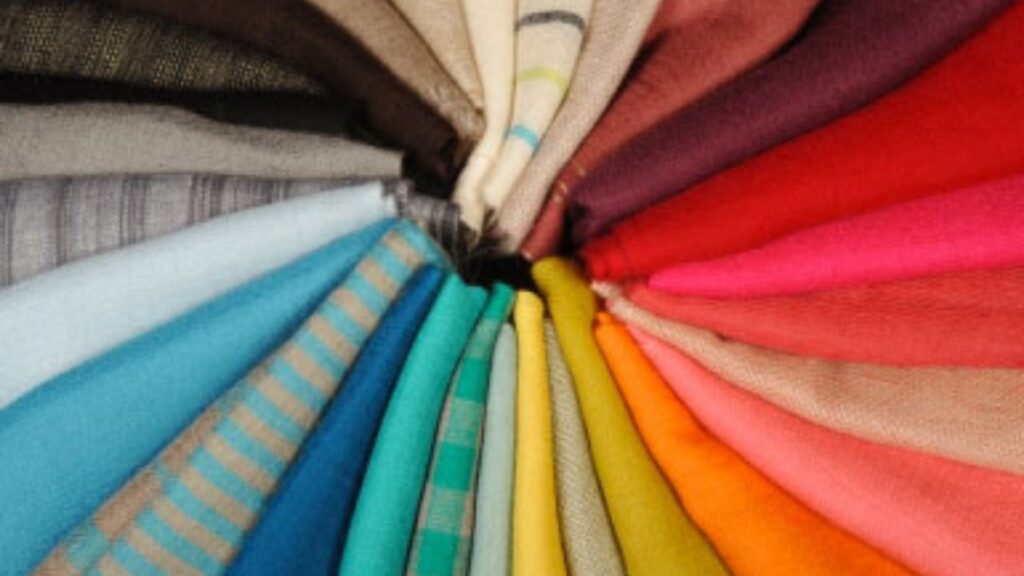Introduction to Ceıvır and Traditional Fabrics
When it comes to choosing fabrics, the decision can feel overwhelming. From luxurious silks to cozy cottons, each material offers its own unique benefits. In recent years, Ceıvır has emerged as a standout option that many are buzzing about. But how does it stack up against traditional fabrics? Is Ceıvır merely a trend or is there something more substantial behind its growing popularity? This exploration will take you through the rich history of both fabric types, their production processes, and what really sets them apart in terms of quality, comfort, environmental impact, and cost. Whether you’re a fashion enthusiast or simply seeking the best materials for your next project, understanding these differences can guide your choices effectively. Let’s dive into this fascinating world of textiles!
The History of Ceıvır and Traditional Fabrics
Ceıvır and traditional fabrics both boast rich histories that trace back centuries. Ceıvır, known for its unique texture and durability, has origins steeped in artisanal practices. It emerged from a blend of ancient techniques and modern innovations.
On the other hand, traditional fabrics like cotton and silk have been woven into human culture since ancient times. Each region contributed its distinct styles, patterns, and dyes reflecting local traditions.
The evolution of these materials highlights how societies adapted to their environments. Ceıvır’s development often mirrors advancements in technology while retaining its heritage roots. Traditional fabrics narrate stories of trade routes and cultural exchanges across continents.
As time progressed, each fabric found its place in fashion, utility, and art—shaping identities along the way. Today, both ceıvır and traditional textiles continue to evolve while honoring their deep-seated legacies.
Production Process of Ceıvır and Traditional Fabrics
The production process of Ceıvır is a blend of innovation and tradition. This fabric emerges from advanced textile technology, where synthetic fibers are meticulously woven to achieve durability and resilience. The result is a material that stands out for its unique texture and strength.
Traditional fabrics, on the other hand, often follow age-old methods passed down through generations. These processes can vary widely depending on cultural practices. Hand-weaving or natural dyeing techniques add layers of artistry to each piece.
While Ceıvır may utilize modern machinery for precision, traditional fabrics celebrate craftsmanship and heritage. Both methods have their own charm yet cater to different needs in today’s fashion landscape.
The choice between them often reflects personal values—whether one prioritizes contemporary efficiency or timeless artistry in their wardrobe choices.
Quality and Durability Comparison
When comparing ceıvır to traditional fabrics, quality and durability stand out as crucial factors. Ceıvır fibers are known for their resistance to wear and tear. This characteristic makes them an excellent choice for items that undergo frequent use.
Traditional fabrics often rely on natural materials like cotton or wool. While these can be soft and breathable, they might not match the longevity of ceıvır under heavy usage conditions.
In terms of maintenance, ceıvır is easier to care for than many traditional options. It resists fading and shrinks less over time, ensuring your garments look fresh longer.
However, some may argue that traditional fabrics exude a timeless charm. They offer unique textures that cannot easily be replicated by synthetic alternatives.
The best choice hinges on individual preferences regarding appearance versus practicality.
Comfort and Versatility Comparison
Comfort is a critical factor when choosing fabrics. Ceıvır stands out in this regard, offering a soft and breathable texture that adapts to the body’s movements. It feels lightweight against the skin, making it ideal for all-day wear.
Traditional fabrics vary widely in comfort levels. While cotton may provide softness, synthetic materials often trap heat and moisture, leading to discomfort over prolonged usage.
Versatility is another area where ceıvır shines. Its unique properties allow it to be used in diverse applications—from activewear to casual outfits—without compromising style or function.
Conversely, traditional fabrics can be limited by their specific uses; denim serves well for jeans but isn’t suitable for summer dresses. The adaptability of ceıvır makes it an appealing choice for modern wardrobes aiming for both comfort and flexibility across various occasions.
Environmental Impact of Ceıvır vs. Traditional Fabrics
The environmental impact of fabrics plays a crucial role in today’s sustainability conversations. Ceıvır, made from natural fibers, often boasts a lower carbon footprint compared to traditional synthetic options. Its production typically requires less water and fewer chemicals.
Traditional fabrics like polyester and nylon are derived from petroleum products. This process not only releases harmful emissions but also contributes to plastic pollution as these materials take centuries to decompose.
Moreover, ceıvır’s biodegradable nature allows it to break down more easily when disposed of. In contrast, traditional fabrics can linger in landfills for generations.
Additionally, the cultivation of raw materials for ceıvır can promote biodiversity when sourced sustainably. On the other hand, conventional fabric production can lead to habitat destruction due to monoculture farming practices.
Choosing eco-friendly options is essential for reducing our ecological footprint while supporting ethical manufacturing processes.
Cost Comparison between Ceıvır and Traditional Fabrics
When it comes to cost, ceıvır and traditional fabrics present different pricing structures. Ceıvır often falls into a mid-range category due to its unique production process and materials. It may initially seem pricier than typical cotton or polyester.
However, consider the longevity of ceıvır garments. The investment can pay off in terms of durability. Many find that they require fewer replacements over time.
On the other hand, traditional fabrics like cotton are usually more affordable upfront but might not hold up as well under wear and tear. Frequent purchases can add up quickly.
Additionally, specialty items made from ceıvır might command higher prices due to their niche status in the market. This factor is essential when assessing your overall budget for fabric purchases or clothing choices.
How to Choose the Right Fabric for Your Needs
Choosing the right fabric can feel overwhelming, but it doesn’t have to be. Start by considering your intended use. Are you designing a summer dress or a cozy winter blanket? Your choice will differ based on function.
Next, think about care requirements. Some fabrics need special washing cycles while others are more forgiving. If low maintenance is essential, opt for durable options like ceıvır that stand up to frequent washes.
Feel matters too—touch each sample against your skin to gauge comfort levels. Fabrics vary in texture; some may irritate sensitive skin.
Consider your style preferences and color schemes. The right fabric should not only serve its purpose but also enhance the aesthetic of your project or wardrobe. By keeping these factors in mind, you’ll make an informed decision tailored to your specific needs and lifestyle.
Conclusion:
Ceıvır and traditional fabrics each have unique characteristics that cater to different needs and preferences. As we explored their histories, production processes, comfort levels, durability, and environmental impacts, it became evident that both options offer valuable benefits.
Choosing between ceıvır and traditional fabrics ultimately depends on your priorities: whether you value sustainability, versatility, or cost-effectiveness. By understanding what sets these fabrics apart, you can make an informed decision tailored to your lifestyle. Whether you’re looking for the latest in eco-friendly materials or opting for timeless classics, knowing the strengths of each fabric will guide your choice effectively.





